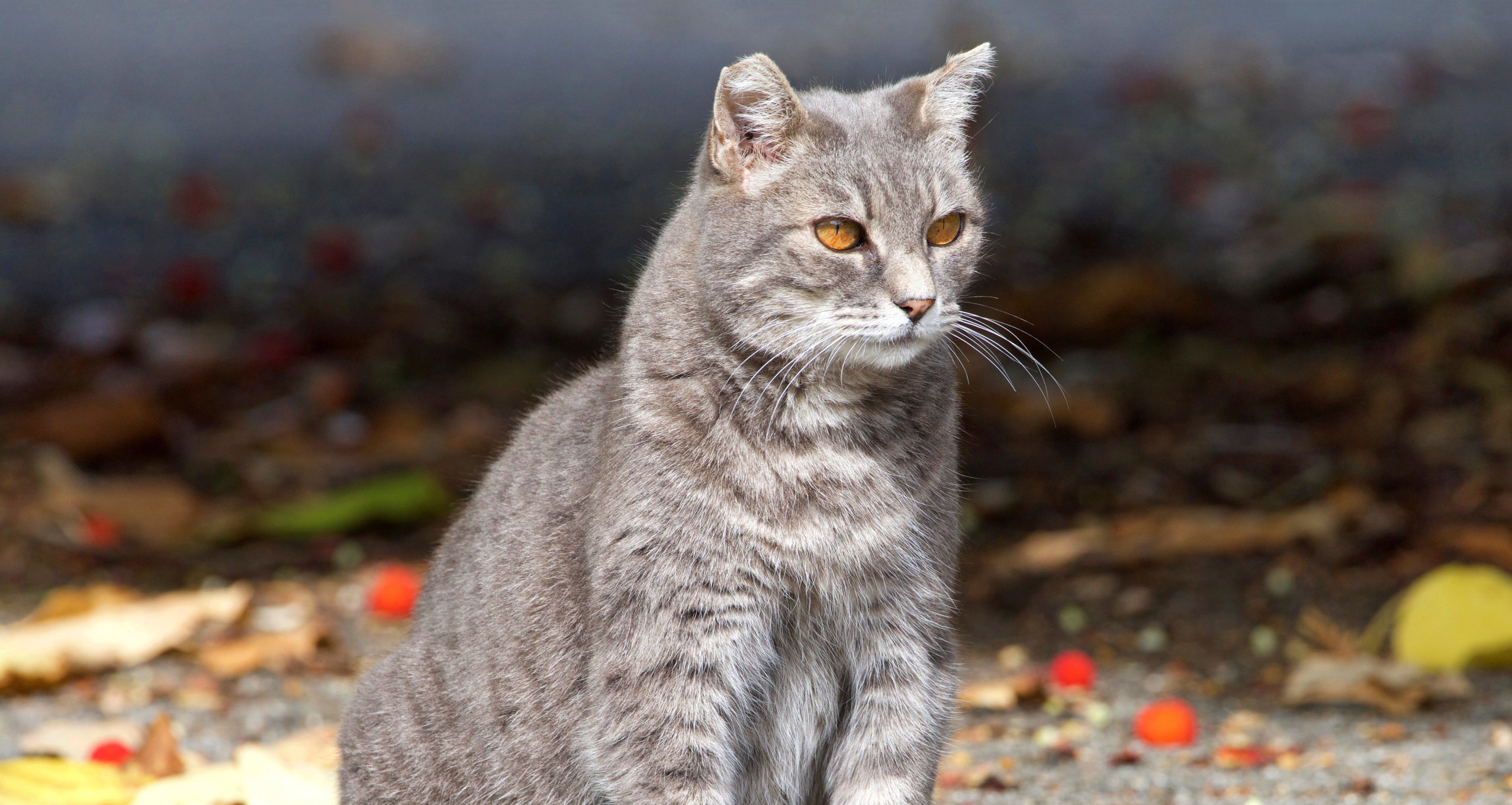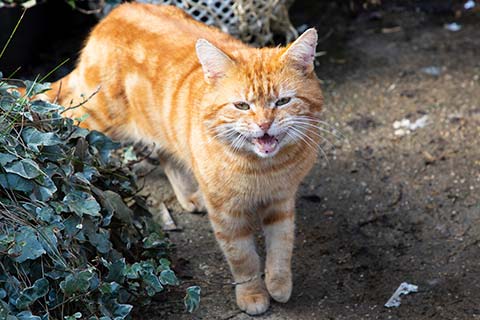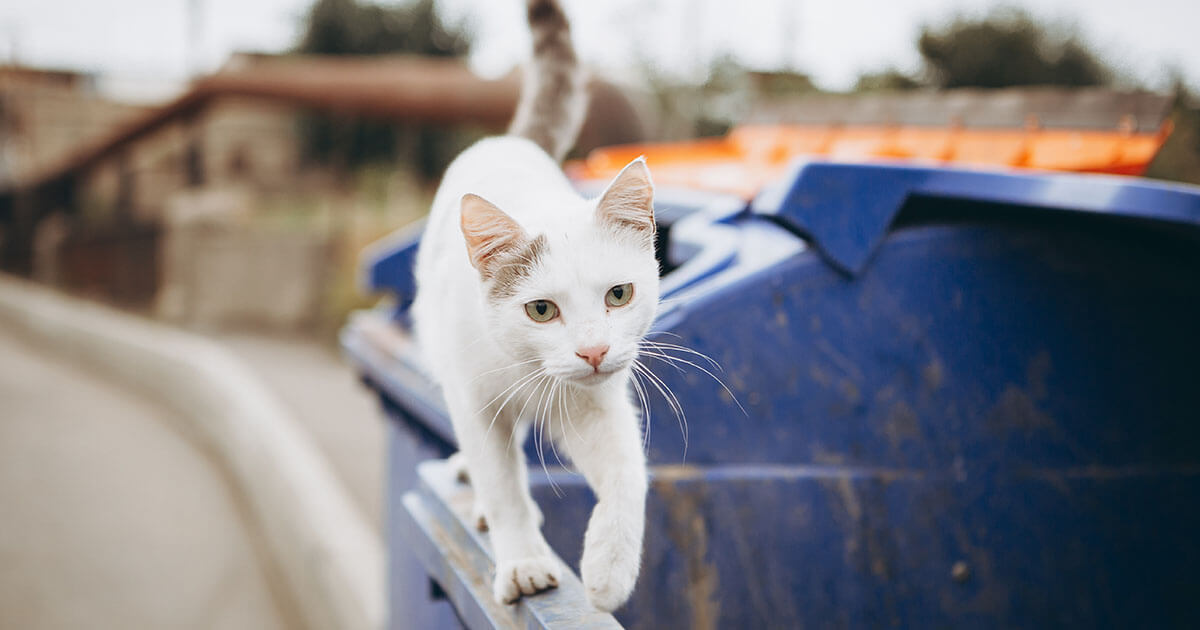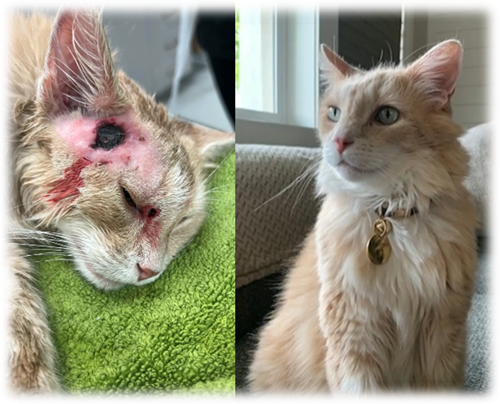Stray cats often have their ear clipped to signify they’ve been spayed or neutered. This practice, called ear tipping, enables quick identification to prevent re-trapping and unnecessary surgeries.
Community cat populations are a widespread concern, and managing their reproductive health is essential to control their numbers. Ear tipping plays a pivotal role in Trap-Neuter-Return (TNR) programs, which are humane and effective methods to stabilize feral cat colonies. Through TNR, cats are trapped, spayed or neutered, vaccinated, and then returned to their territory with a clipped ear indicating their treatment.
This simple visual marker helps caretakers and volunteers monitor the colony’s neutering status. The process not only curbs overpopulation but also reduces nuisance behaviors associated with unneutered cats. By spreading awareness and practicing TNR, communities can ensure healthier lives for stray and feral cats in an ethical and non-invasive manner.

Credit: floridaanimalfriend.org
The Plight Of Stray Cats
Stray cats live tough lives. Every day, they fight for food, shelter, and safety. Often unnoticed, these felines face constant threats. Illness, traffic, and harsh weather are real dangers. Helping them is vital. One way we support them is through a practice known as ear tipping. This small act can mean a world of change for their well-being.
Life On The Streets
Imagine everyday survival being your only goal. Stray cats live this reality. Without homes, they roam our neighborhoods. Food is scarce and often from trash cans. Predators lurk at every corner. Humans may not be kind to them either. Life on the streets is not romantic, it’s a struggle.
- Scrounging for food amidst dangers.
- Competing with other strays and wildlife.
- Facing extreme weather without shelter.
Common Misconceptions
Many misunderstand strays. People assume they’re wild, dirty, or harmful. This isn’t true. In reality, strays are often abandoned pets or born to unowned cats. They need care, not fear. Dispelling myths is the first step to aid.
| Misconception | Truth |
|---|---|
| Stray cats are aggressive. | Most are shy and avoid humans. |
| They carry diseases. | Illness is possible, but help can prevent spread. |
| Strays damage the environment. | They struggle to survive, much like wildlife. |
Ear Clipping Unveiled
Among the many mysteries of stray cat life, ear clipping stands out as a peculiar sight. This post unveils why the tip of one ear on a stray cat might be missing. Understanding this practice sheds light on an essential aspect of feral cat care and population control.
A Humane Practice
Ear clipping, also known as ear tipping, is a safe surgical procedure. Vets perform it under anesthesia. It is part of the Trap-Neuter-Return (TNR) program. It helps control the stray cat population in a non-lethal way. After neutering, the cat’s ear is clipped to prevent unnecessary re-trapping and surgery.
- Quick healing: The ear tip heals fast, causing minimal discomfort.
- Minimally invasive: Only the tip is removed, ensuring the cat’s well-being.
- One-time procedure: Once clipped, the cat won’t undergo surgery again.
Visual Indicators Of Tnr
Ear clipping serves as a visual cue. It shows that a cat is part of a TNR program. Here’s why it’s crucial:
| Why Ear Clipping? | Benefits |
|---|---|
| Easy to spot | Community can identify neutered cats from a distance. |
| Non-verbal messaging | Signals caregivers and vets that the cat is sterilized. |
| Health indicator | Shows the cat has received health check-ups and vaccines. |
Recognizing ear-tipped cats helps maintain a healthy community cat colony. It also eliminates unnecessary stress for cats who are already living outdoors.
Tnr: Trap-neuter-return Explained
Imagine a world where every stray cat enjoys a healthier life. That’s the aim of TNR: Trap-Neuter-Return. It’s a community-driven program addressing the endless cycle of stray and feral cat breeding. Curious about how this helps both cats and communities? Let’s explore this humane strategy.
The Process
The TNR process entails three simple, yet impactful steps:
- Trap: Stray and feral cats are humanely captured.
- Neuter: They’re taken to a vet for spaying or neutering.
- Return: Cats are returned to their familiar environment.
Volunteers and organizations worldwide participate in TNR. They use humane traps designed for cats and ensure minimal stress for the animals.
Benefits To Feline Welfare
- Controls the cat population without causing harm.
- Reduces behaviors like fighting and marking territory.
- Prevents diseases and improves overall health.
An ear clipping, while under anesthesia, marks a neutered stray. It’s a small straight cut on the ear tip. This symbol helps caretakers identify neutered cats at a glance, sparing them from unnecessary re-trapping and surgery.
Addressing Welfare Concerns
Wondering why you often see stray cats with a clipped ear? This mark is crucial for their health and community wellness. This unique symbol helps identify neutered or spayed stray cats. It helps control the stray population. It also shows which cats received vaccinations and care. Let’s delve into the specifics of this important practice, ensuring the well-being of these independent felines.
Surgical Safety
The procedure to clip a cat’s ear is called ear-tipping. It occurs under strict sterile conditions. Vets perform this surgery while cats are already under anesthesia for spaying or neutering. This ensures that the cat doesn’t feel pain. Ear-tipping is a quick process. It is a safe signifier for feral cat welfare.
Post-surgery Recovery
After ear-tipping, cats need minimal recovery time. Surgeons ensure a small portion of the ear is removed. This allows for quick healing. Cats return to their communities often within the same day. This practice helps avoid unnecessary stress on the animal. It also reduces the chance of infections. Ear-tipped strays thus signify a responsibly managed colony.
Community Impact
Many wonder why stray cats have ear clips. It’s for a good reason! Ear clipping lets people know a stray cat is part of a TNR program, which stands for Trap-Neuter-Return. This simple sign has a big effect on neighborhoods. Let’s look at how these clipped ears are changing communities for the better.
Reducing Feral Populations
Ear clipping plays a key role in controlling the number of feral cats. It signals that a cat can’t have kittens. Fewer kittens mean fewer cats on the streets. Here’s how this helps everyone:
- Less noise from cats fighting or looking for mates.
- Decreased spread of diseases to other animals.
- Cats with clips are often healthier and calmer.
Promoting Public Health
Cats without owners can carry illnesses. By clipping ears and controlling populations, communities become safer. Here’s a list of health benefits:
- Fewer cat bites and scratches.
- Reduced risk of rabies transmission.
- Lower chance of parasite spread, like fleas.
These steps ensure a cleaner and healthier environment for everyone.

Credit: www.rspca.org.uk
How To Support Feral Cat Care
One of the silent signals of a managed feline community is the discreet notch or clip in a stray cat’s ear. When you see a stray cat with an ear tipped or clipped, it often means they’ve been part of a Trap-Neuter-Return (TNR) program — a humane approach to managing and reducing feral cat populations. As a cat lover, your support can dramatically improve the lives of these free-roaming felines. Let’s delve into how anyone can aid in feral cat care.
Volunteering For Tnr Programs
Joining a TNR initiative is a profound way to help feral cats. Volunteers are always needed for various tasks, including:
- Trapping: Assist in the safe capture of cats for spaying or neutering.
- Transporting: Drive cats to and from clinics or holding spaces.
- Recovery: Aid in post-surgery care before cats are returned to their habitats.
Search for local TNR programs in need of helping hands or start one with guidance from established organizations.
Educating Others
Fostering awareness can lead to more community involvement. Educate others by:
- Hosting information sessions about TNR and its benefits.
- Distributing literature in neighborhoods with stray populations.
- Using social media to share facts and dispel myths.
Remember, a community informed about feral cats is more likely to support these animals.

Credit: www.facebook.com
Frequently Asked Questions On Why Are Stray Cat Ear Clipped
Does A Clipped Ear Mean A Cat Is Feral?
A clipped ear on a cat typically signifies it has been part of a Trap-Neuter-Return (TNR) program, not that it is necessarily feral.
Does Clipping A Cats Ear Hurt Them?
Ear clipping, known as ear tipping, is a quick procedure typically performed under anesthesia, minimizing pain for the cat. Post-procedure recovery is usually swift with proper care.
Do Cats Feel Pain When Their Ears Are Clipped?
Cats do feel pain when their ears are clipped, as with any surgical procedure. Proper pain management techniques can minimize discomfort.
Why Do Cats Have Little Cuts In Their Ears?
Cats may have notches or cuts in their ears due to identification from trap-neuter-return programs or from past injuries. This deliberate marking signals that a feral cat has been sterilized.
Conclusion
Ear tipping in stray cats serves a vital role in TNR programs. This humane method effectively communicates a cat’s neutered status. By understanding its significance, communities can better support feline welfare. Let’s continue promoting this practice for the health and management of stray cat populations.

